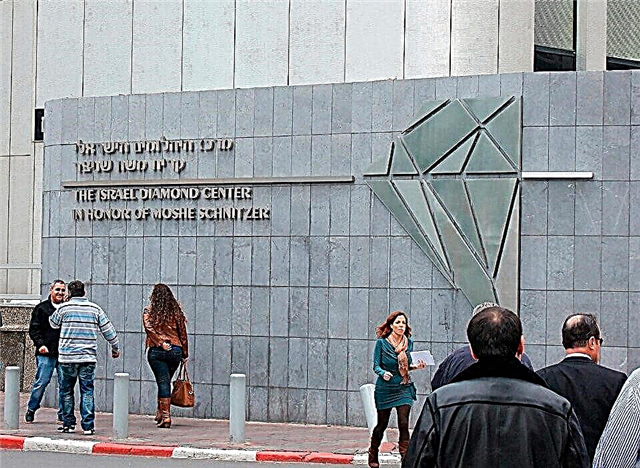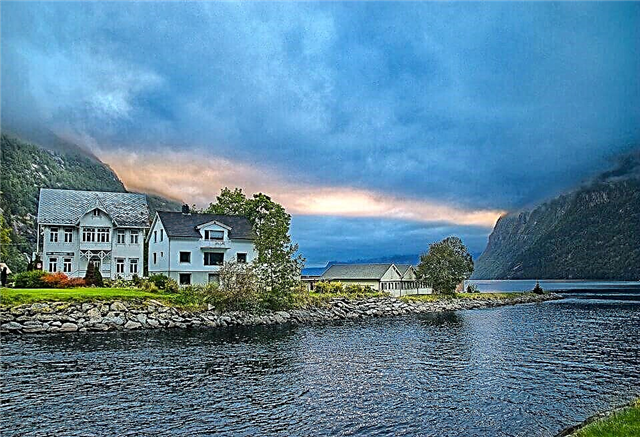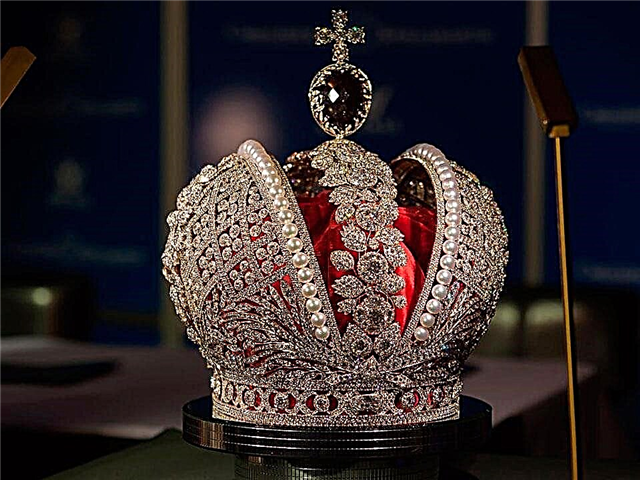Address: Russia, Moscow, at the corner of Mokhovaya and Bolshaya Nikitskaya streets
Construction date: 1833 - 1836
Coordinates: 55 ° 45'16.7 "N 37 ° 36'41.6" E
Content:
The university church stands out among other cathedrals and temples in Moscow. A small building with columns and a cross looks austere and looks more like a civilian building. The history of the house church is closely connected with the history of Moscow State University and the Russian capital.

Construction history
In the winter of 1755, Tsarina Elizaveta Petrovna issued a decree on the creation of a higher educational institution in Moscow. It was opened on the day of commemoration of the Martyr Tatiana, so the saint began to be considered the heavenly patroness of students. Over time, Tatyana's day turned into a holiday for all students.
Moscow University differed from other similar institutions in that it was taught here not in Latin, but in Russian. The law of God was a compulsory discipline, although there was no separate theological faculty in the structure of the university.
The student church appeared immediately after the founding of the university. At first, it was arranged in the building of the Main Pharmaceutical Order, in the place of which the State Historical Museum now stands. The management and trustees of the university have been looking for a house church for a long time, but they have not found a solution. All parishes in the center of Moscow were either overcrowded or the churches were in a deplorable state.

In 1785, Empress Catherine II handed over to the university the house that used to belong to the lieutenant-general, Prince Boryatinsky, and the next year she allocated a large sum of money for the construction of a new building. The famous Russian architect Matvey Fedorovich Kazakov erected a beautiful building in the classicism style on Mokhovaya, so the students and teachers moved to Mokhovaya Street.
According to the project of the Moscow architect Anton Ivanovich Claudi, a house church was built in the left wing of the university. In 1791, a new church was consecrated in honor of St. Tatiana. The next year, during the Easter holiday, Catherine II presented the students with rich robes and a full sacristy for the university church.
Temple in the XIX-XX centuries
In 1812, Napoleon's troops attacked our country. The trouble was not spared and Moscow University. When a strong fire broke out in the city center, the Tatian Church burned down along with other university buildings. At that time, the rector of the temple was Hieromonk Jonah. Miraculously, he managed to save icons and valuable church utensils.

While the university was being restored, the nearby St. George Church on Krasnaya Gorka played the role of a house church. At the same time, it remained a parish, so residents of the surrounding streets who had nothing to do with the students came to services.
In the 1830s, Tsar Nicholas I purchased the former Pashkovs' estate for the university. He instructed the architect Evgraf Dmitrievich Tyurin to develop a project, and he rebuilt the manor buildings for the needs of the students. The main building was redesigned for classrooms, a library was made in the left wing of the estate, and the right wing, where the theater used to be located, was turned into a university church.
EF Tyurin made a radical redevelopment of buildings, but did not touch the ancient and solid foundation, and also preserved the capital walls of the estate as much as possible. After the reconstruction, the university ensemble began to look like a powerful, monumental structure. It is noteworthy that Tyurin considered it an honor to work for Moscow University, so he refused to take money for his work. Moreover, he presented the students with a collection of paintings, which he collected all his life.

The renovated buildings were great. They looked great next to the spacious Manezhnaya Square and the Moscow Kremlin. Thanks to the talented architect, the luxurious palace of the Moscow nobleman turned into an austere and solemn temple of science.
The university house church had two floors with prayer halls. After the consecration, icons and church utensils from the St. George Church on Krasnaya Gorka were transferred to it. Writer Nikolai Vasilyevich Gogol, famous Russian historians Timofey Nikolaevich Granovsky, Vasily Osipovich Klyuchevsky, Sergei Mikhailovich Solovyov and poet Afanasy Afanasyevich Fet were buried under the vaults of the church. In 1892, the future poet Marina Tsvetaeva was baptized here.
After the 1917 revolution, the attitude towards religion in the country changed. A decree was issued to close all house churches at schools and universities. In 1919, two trucks drove up to the university, and under cover of night, the Tyurin church was destroyed. The workers took out the icons, knocked down the crosses, and the motto "Science for the working people" was fixed on the facade. At first, ancient icons and utensils were kept behind a curtain in the former altar, but then they disappeared without a trace.

To keep the room from being empty, they installed bookcases and a reading room for law students. In 1922, a club was opened in the building. It was here that the proletarian poet Vladimir Mayakovsky read his new poet “Good” to the youth.
In the late 1950s, young Rolan Bykov opened a student theater in the former church. For several decades, the building hosted evenings in memory of famous actors and creative meetings with writers. The famous director Mark Zakharov staged new plays by Yevgeny Schwartz on the stage of the theater.
When the temple was handed over to the Orthodox Church in 1995, the period of its restoration began. The restorers managed to find the old drawings and sketches of E. Tyurin and returned the student church to its historical appearance.

Architectural features
The temple looks like an elegant semi-rotunda, made in the traditions of the mature Empire style. The rounded building is decorated with a row of slender columns. Thanks to its impeccable proportions, the church looks harmonious and light. A cast bronze cross rises above the austere attic.
Interiors and shrines
The lower church was consecrated in honor of the Metropolitan of Moscow and Kolomna Filaret, and the upper one - in honor of the holy martyr Tatiana. There is a baptismal for adults on the basement floor, and four mosaic icons can be seen in the altar. The upper temple is decorated with a large five-tiered chandelier.
Useful information for tourists
Today the student church is active. Services are held there every day and the newspaper "Tatiana's Day" is published. The church has a Sunday school for parishioners' children, an icon painting studio, schools for bell ringers, altar men and church singing. They conduct programs for young people, provide assistance to the homeless, the sick and the elderly.

How to get there
The church is located in the right wing of the old university, at the corner of Mokhovaya and Bolshaya Nikitskaya streets, opposite the long building of the Manege. It is easy to walk here from the Aleksandrovsky Sad, Borovitskaya and Arbatskaya metro stations.











